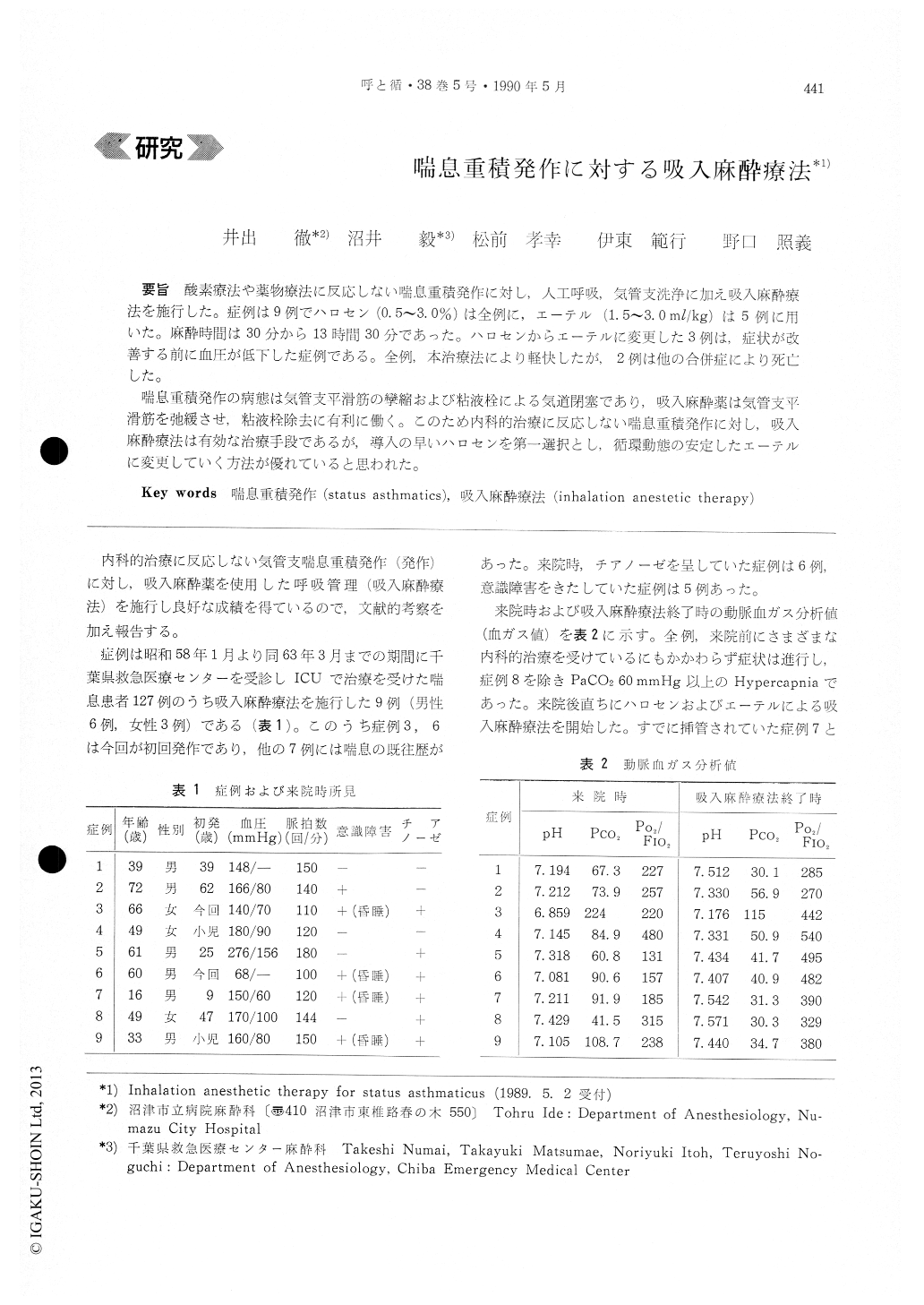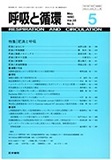Japanese
English
- 有料閲覧
- Abstract 文献概要
- 1ページ目 Look Inside
酸素療法や薬物療法に反応しない喘息重積発作に対し,人工呼吸,気管支洗浄に加え吸入麻酔療法を施行した。症例は9例でハロセン(0.5〜3.0%)は全例に,エーテル(1.5〜3.0ml/kg)は5例に用いた。麻酔時間は30分から13時間30分であった。ハロセンからエーテルに変更した3例は,症状が改善する前に血圧が低下した症例である。全例,本治療法により軽快したが,2例は他の合併症により死亡した。
喘息重積発作の病態は気管支平滑筋の攣縮および粘液栓による気道閉塞であり,吸入麻酔薬は気管支平滑筋を弛緩させ,粘液栓除去に有利に働く。このため内科的治療に反応しない喘息重積発作に対し,吸入麻酔療法は有効な治療手段であるが,導入の早いハロセンを第一選択とし,循環動態の安定したエーテルに変更していく方法が優れていると思われた。
Status asthmatics is characterized pathologically by bronchial smooth muscle spasm, and mucous plug-ging of the small airways. Clinically, it is character-ized by the disturbance of gas exchange. In severe cases, unresponsive to standard therapy (including oxygen, epinephrine, aminophylline and steroids, artificial ventilation, tracheobroncial lavage and in-halation), anesthetic therapy shoud be started without delay. Inhalation anesthetics, halothane or ether, have potent bronchodilating properties which facilitate the removal of mucous plugging.
We reported nine cases with status asthmatics treated by inhalation anesthetic therapy. Halothane (0.5~3.0%) was used in all cases, ether (1.5~3.0ml/kg) was used in five cases. The duration of anesthesia was 0.5 to 13.5 hours. In three halo-thane anesthesia cases, blood pressure was reduced before there was improvement in wheezing, so we were forced to change halothane to ether. In all cases, the symptoms of status asthmatics were improved, but two patients died due to other complications.
We recommended the following method, viz that halothane be administered at first, and be changed to ether in order to maintain circulatory movement.

Copyright © 1990, Igaku-Shoin Ltd. All rights reserved.


